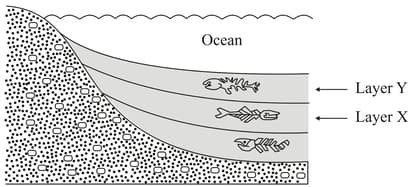Anil Ahlawat Solutions for Chapter: Heredity and Evolution, Exercise 1: EXERCISES
Anil Ahlawat Science Solutions for Exercise - Anil Ahlawat Solutions for Chapter: Heredity and Evolution, Exercise 1: EXERCISES
Attempt the free practice questions on Chapter 8: Heredity and Evolution, Exercise 1: EXERCISES with hints and solutions to strengthen your understanding. NSO Science Olympiad Workbook Grade 10 solutions are prepared by Experienced Embibe Experts.
Questions from Anil Ahlawat Solutions for Chapter: Heredity and Evolution, Exercise 1: EXERCISES with Hints & Solutions
Refer to the given figure. It shows bones of wings of two animals and . These wings are structures.
Select the option that correctly identifies and .
| X | Y | Z | |
| (A) | Bat | Bird | Analogous |
| (B) | Bat | Insect | Homologous |
| (C) | Bird | Bat | Homologous |
| (D) | Bird | Insect | Analogous |
Farmers have produced (or evolved) entirely different looking vegetables from wild cabbage. Below are given some evolved types along with their characteristics. Select the incorrect match among them.
A group of population splitting into two populations due to some factor, can be called two independent species only when
The genotype for the height of an organism is Tt. What conclusion may be drawn from this?
Pure breeding pea plants with green pods are crossed with pure breeding pea plants with yellow pods. All the generation plants have green pods. Plants from the generation are allowed to be interbred. What colour of pods will be observed in generation plants?
In mice, the allele for black fur colour is dominant over the allele for white fur colour. What does this mean in a mouse population?
The given figure shows undisturbed sedimentary strata at the bottom of an ocean. The fossil found in layer Y resembles the fossil found in layer X. This similarity most likely suggests that

Albinism is an inherited condition caused by a recessive allele ‘’. ‘’ is the dominant allele for the normal condition. Study the given pedigree chart and identify the genotypes of individuals and .
| R | S | |
| (A) | ||
| (B) | ||
| (C) | ||
| (D) | ||


